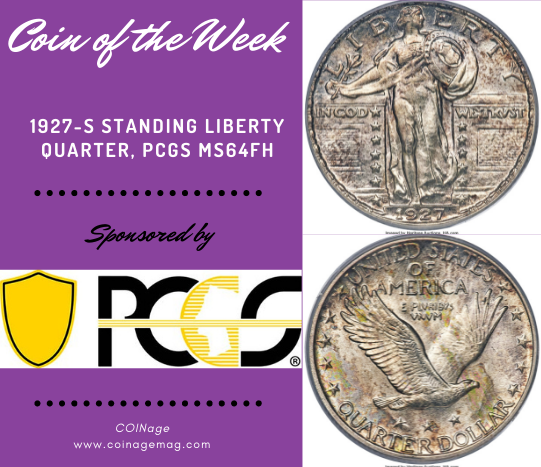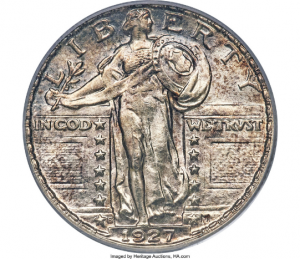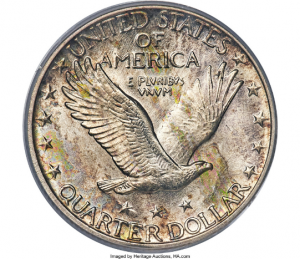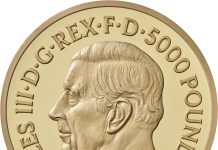
The 1927-S Standing Liberty Quarter is the Professional Coin Grading Services (PCGS) Coin of the Week.
The Standing Liberty quarter by Hermon A. MacNeil is considered a classic American coin, and it’s a favorite among coin collectors. The Standing Liberty quarter was in production from 1916 through 1930, which is a relatively short timeframe for an entire United States coinage series. However, a remarkable number of rarities came from the series during that period. Among these is the 1927-S Standing Liberty quarter, which saw the second-lowest mintage among all business strikes, behind just the storied first-year rarity bearing the “1916” date.


Only 396,000 quarters were struck at the San Francisco Mint in 1927, and these coins are tough for collectors to land today. Even well-worn specimens grading Good-4 take $30, and prices skyrocket up the grading scale, with low-end uncirculated specimens selling for several thousand dollars. Making the 1927-S a tough date isn’t just the sheer lack of availability of finding a specimen, but also the fact that very few were well struck.
Collectors pursuing Full Head (FH) specimens are often hard-pressed to find what they are looking for and need to shell out big bucks when they locate suitable specimens. What kinds of prices would one be needing to spend for such examples? Consider the case of a sweet specimen graded MS64FH by PCGS, which snagged $75,000 in a January 2021 Heritage Auctions sale.
Coin Grading
A coin’s value is determined by the interrelationship of three factors: grade, supply and demand. The higher the grade, the lower the supply. The higher the demand, the greater the value.
Grade refers to a coin’s level of preservation: how many nicks or scratches or other imperfections it has. Coins are graded on a scale of one to 70, with higher numbers signifying higher grades. One represents a coin that is so well worn that it’s barely identifiable as to its type. 70 represents a perfect coin: a coin that when viewed under a five-power magnifying glass has no visible imperfections.
60 through 70 represent the Mint State (MS) grades. A coin graded MS-60 can have so many nicks and scratches and flaws that it might look as if Godzilla used it as a teething ring. MS-65 is the industry standard for “Gem.” MS-66 through MS-69 are the near-flawless super-grade or wonder coin assignations. With each grade level above MS-66, the value might double or triple.















